It’s been almost 13 years since I purchased my first mobile phone. I think it’s about time to look back and admire the evolution of the small handheld devices that we carry around with us today everywhere we go.
1997: Nokia 2110
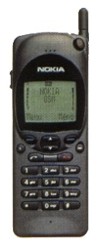 The most lengendary mobile device of them all. Bought it when going to the army for one year and it happily survived even the worst conditions in the cold and wet forest camps. Later on I gave it to my mom, fitted with a brand new red colour cover and it again duly served as the first mobile phone for a new user. If you only need your mobile for phone calls and SMS’s, then this baby pretty much had it all already in 1995. Why didn’t we just stop right here?
The most lengendary mobile device of them all. Bought it when going to the army for one year and it happily survived even the worst conditions in the cold and wet forest camps. Later on I gave it to my mom, fitted with a brand new red colour cover and it again duly served as the first mobile phone for a new user. If you only need your mobile for phone calls and SMS’s, then this baby pretty much had it all already in 1995. Why didn’t we just stop right here?
1999: Ericsson GH-688
 Even though the battle between Finns (Nokia) and Swedes (Ericsson) was fierce in mobile phone manufacturing back in the 90’s, I still had enough courage to take a step to the dark side and replace my trusty Nokia with a more compact device from Ericsson. In addition to the smaller size, it had support for dual-band GSM and, most importantly, custom ringtones! No, not the ones you would purchase online and get delivered through SMS. I’m talking about the possibility of composing your own ringtones by entering the notes of the tune into the phone with the keypad. Yes, you bet this was a painful experience, but boy was I proud to have my phone ringing in a public place and have the riff from Café Del Mar by Energy 52 played by the monotonic beeper of the GH-688.
Even though the battle between Finns (Nokia) and Swedes (Ericsson) was fierce in mobile phone manufacturing back in the 90’s, I still had enough courage to take a step to the dark side and replace my trusty Nokia with a more compact device from Ericsson. In addition to the smaller size, it had support for dual-band GSM and, most importantly, custom ringtones! No, not the ones you would purchase online and get delivered through SMS. I’m talking about the possibility of composing your own ringtones by entering the notes of the tune into the phone with the keypad. Yes, you bet this was a painful experience, but boy was I proud to have my phone ringing in a public place and have the riff from Café Del Mar by Energy 52 played by the monotonic beeper of the GH-688.
2000: Nokia 3210
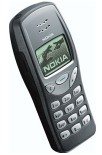 The new millenium had dawned and it had started to look more and more obvious that Nokia was pulling away from the competition. Sleek and simple phones like the 3210 had pretty much perfected the usability and user experience that was to be expected from a traditional GSM phone, plus they were being offered to the mass market with highly attractive price tags. The external antenna had already been eliminated, making 3210 a real easy object to just slip into your pocket, while T9 made writing SMS’s a joy for sore thumbs.
The new millenium had dawned and it had started to look more and more obvious that Nokia was pulling away from the competition. Sleek and simple phones like the 3210 had pretty much perfected the usability and user experience that was to be expected from a traditional GSM phone, plus they were being offered to the mass market with highly attractive price tags. The external antenna had already been eliminated, making 3210 a real easy object to just slip into your pocket, while T9 made writing SMS’s a joy for sore thumbs.
2001: Nokia 7110
 Behold, the mobile interet was here! Well, not quite in the way that you would interpret the term nowadays. The first WAP phone from Nokia did its best to open a tiny little window into the world of online content, but with the lack of useful WAP content or even GPRS rate data transfer, it was always going to be a tough sell. Luckily the 7110 had other nice features to make up for the dissapointment of WAP. Similar to the “banana” phone 8110, there was a spring-loaded sliding cover for the keyboard, which made answering to an incoming phone call great fun by allowing you to “pull the trigger” and watch the slider unfold. Another cool innovation was the roller wheel, which had replaced the up/down buttons. Can’t imagine why it wasn’t adopted to more models, but it sure made playing the built-in table tennis game a real mobile gaming treat á la early 00’s.
Behold, the mobile interet was here! Well, not quite in the way that you would interpret the term nowadays. The first WAP phone from Nokia did its best to open a tiny little window into the world of online content, but with the lack of useful WAP content or even GPRS rate data transfer, it was always going to be a tough sell. Luckily the 7110 had other nice features to make up for the dissapointment of WAP. Similar to the “banana” phone 8110, there was a spring-loaded sliding cover for the keyboard, which made answering to an incoming phone call great fun by allowing you to “pull the trigger” and watch the slider unfold. Another cool innovation was the roller wheel, which had replaced the up/down buttons. Can’t imagine why it wasn’t adopted to more models, but it sure made playing the built-in table tennis game a real mobile gaming treat á la early 00’s.
2003: Sony Ericsson T300
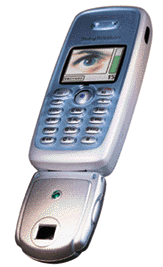 Monochrome is no longer enough, now it’s all about colour displays. Sadly the Nokia 3510i misses its availability target and I have to go for a model from the Ericsson camp, nowadays already a joint venture with the Japanese after a steep decline of market share. There’s one more gimmick to the T300 that makes it stand out from the competition: a camera. Yes, in the year 2010 you can hardly imagine a handset without some form of camera for capturing a blurry image of the priceless moment that sneaks up on you while your EOS 5D is in your other bag. Back in 2003 it was still all about capturing pictures for sending them through MMS messages (before we had Facebook), thus creating a demand for the huge 65k colour screens found in the high-end models. SE T300 was not an expensive phone, yet it came equipped with a VGA camera. So what’s the catch? Well, it came with a camera, meaning this was an external unit that you had to attach to the bottom of the phone. Oh dear…
Monochrome is no longer enough, now it’s all about colour displays. Sadly the Nokia 3510i misses its availability target and I have to go for a model from the Ericsson camp, nowadays already a joint venture with the Japanese after a steep decline of market share. There’s one more gimmick to the T300 that makes it stand out from the competition: a camera. Yes, in the year 2010 you can hardly imagine a handset without some form of camera for capturing a blurry image of the priceless moment that sneaks up on you while your EOS 5D is in your other bag. Back in 2003 it was still all about capturing pictures for sending them through MMS messages (before we had Facebook), thus creating a demand for the huge 65k colour screens found in the high-end models. SE T300 was not an expensive phone, yet it came equipped with a VGA camera. So what’s the catch? Well, it came with a camera, meaning this was an external unit that you had to attach to the bottom of the phone. Oh dear…
2004: Nokia N-Gage
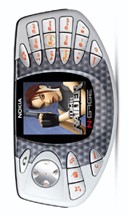 After colour displays and detachable cameras, things just kept on getting more obscure. Although only a brief encounter, I’m proud to say that Nokia N-Gage was my first smartphone. Yes, the machine was aimed to be a full-blown games console, but what it actually turned out to be eventually was a very affordable entry level version of a Symbian Series 60 phone, thanks to the massive flop of the mid-00’s mobile gaming concept and the steep discounts applied to the remaining units. If it wasn’t for the incomprehensible product design known as sidetalkin’, this phone could have proved to be a great vehicle for delivering mobile apps to the masses. But it wasn’t, and N-Gage was written off as Nokia’s first major failure in trying to extend its dominance beyond “just mobile phones”.
After colour displays and detachable cameras, things just kept on getting more obscure. Although only a brief encounter, I’m proud to say that Nokia N-Gage was my first smartphone. Yes, the machine was aimed to be a full-blown games console, but what it actually turned out to be eventually was a very affordable entry level version of a Symbian Series 60 phone, thanks to the massive flop of the mid-00’s mobile gaming concept and the steep discounts applied to the remaining units. If it wasn’t for the incomprehensible product design known as sidetalkin’, this phone could have proved to be a great vehicle for delivering mobile apps to the masses. But it wasn’t, and N-Gage was written off as Nokia’s first major failure in trying to extend its dominance beyond “just mobile phones”.
2005: Nokia 6670
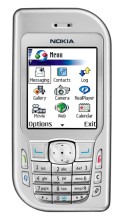 Unlike you might think today, Symbian wasn’t always the ugly, older cousin of the iPhone OS. In fact, it used to be the coolest kid on the block, showing you the way how mobile phones would eventually grow up to be the platforms for social network extension that they are today. The 6670 was a more modestly clothed variant of the design-ish 7610, aimed at the business productivity oriented crowd. What it ended up being in my daily use was a hugely captivating toy for a 5-year old boy, who just couldn’t get enough of all the great action games I purchased from the appstores of mid 00’s. Ok, so maybe I did occasionally enjoy a few rounds of the shoot’em up’s myself. After all, how many impressive productivity apps were there back in 2005 anyway?
Unlike you might think today, Symbian wasn’t always the ugly, older cousin of the iPhone OS. In fact, it used to be the coolest kid on the block, showing you the way how mobile phones would eventually grow up to be the platforms for social network extension that they are today. The 6670 was a more modestly clothed variant of the design-ish 7610, aimed at the business productivity oriented crowd. What it ended up being in my daily use was a hugely captivating toy for a 5-year old boy, who just couldn’t get enough of all the great action games I purchased from the appstores of mid 00’s. Ok, so maybe I did occasionally enjoy a few rounds of the shoot’em up’s myself. After all, how many impressive productivity apps were there back in 2005 anyway?
2006: Nokia 9310
 Communicators have always meant Business with a capital B. Ever since the first 9000 model released in 1996, owning a black brick with a QWERTY keyboard and a GSM chip meant you were someone significant (in Finland, that is). By the time of the 4th generation of Communicators, Nokia had decided to release two alternative versions of the product: the real man’s heavy duty Nokia 9500 Communicator and the slimmed down ladies version Nokia 9300 (not even labelled as Communicator anymore). Despite of the obviously sexist product positioning, I ended up taking the slim route and learning to type with the compact N9310 keyboard. I must say the form factor in this smartphone was spot on, allowing it to easily fit in your pocket while still catering to the most hardcore PDA style note takers and PIM’ers. An important milestone was also the fact that this was the very first phone that provided me push email from the Exchange server back at the office, thanks to the Seven/SmartMail service I purchased for the whole office. Say goodbye to lazy evenings with no connection to your work commitments and deadlines filling up your inbox all day round (*sigh*).
Communicators have always meant Business with a capital B. Ever since the first 9000 model released in 1996, owning a black brick with a QWERTY keyboard and a GSM chip meant you were someone significant (in Finland, that is). By the time of the 4th generation of Communicators, Nokia had decided to release two alternative versions of the product: the real man’s heavy duty Nokia 9500 Communicator and the slimmed down ladies version Nokia 9300 (not even labelled as Communicator anymore). Despite of the obviously sexist product positioning, I ended up taking the slim route and learning to type with the compact N9310 keyboard. I must say the form factor in this smartphone was spot on, allowing it to easily fit in your pocket while still catering to the most hardcore PDA style note takers and PIM’ers. An important milestone was also the fact that this was the very first phone that provided me push email from the Exchange server back at the office, thanks to the Seven/SmartMail service I purchased for the whole office. Say goodbye to lazy evenings with no connection to your work commitments and deadlines filling up your inbox all day round (*sigh*).
2007: HTC S710
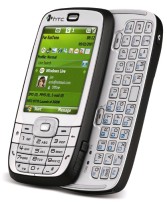 “What’s that phone you’re carrying around? H T what??? Some new model from Nokia?” Previously known as Qtek, it’s been a long road for HTC to become a mobile phone brand recognized by the masses, and I think there’s still some miles to travel. In 2007 their offering was firmly built around the ever powerful Windows Mobile platform, which had shown it’s strength in battling with Palm for the touch screen PDA market. The S710 however was a traditional phone with no screen to tap, which meant that the biggest strength lied in the highly compact but surprisingly usable slider QWERTY. Once again a perfect device for the occasional email replies, but lacking a decent browser (Opera Mini couldn’t quite make up for the sorry excuse that WinMo IE is to mobile browsing) and 3G connectivity meant it was not going to reach a classic status. A solid tool but nothing more.
“What’s that phone you’re carrying around? H T what??? Some new model from Nokia?” Previously known as Qtek, it’s been a long road for HTC to become a mobile phone brand recognized by the masses, and I think there’s still some miles to travel. In 2007 their offering was firmly built around the ever powerful Windows Mobile platform, which had shown it’s strength in battling with Palm for the touch screen PDA market. The S710 however was a traditional phone with no screen to tap, which meant that the biggest strength lied in the highly compact but surprisingly usable slider QWERTY. Once again a perfect device for the occasional email replies, but lacking a decent browser (Opera Mini couldn’t quite make up for the sorry excuse that WinMo IE is to mobile browsing) and 3G connectivity meant it was not going to reach a classic status. A solid tool but nothing more.
2009: HTC Touch Pro2
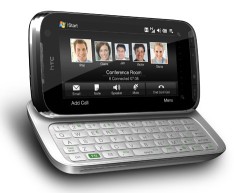 Still standing on the Windows Mobile soil, but this time with a whole new bag of tricks. Looking almost like an iPhone with a QWERTY, this baby was clearly trying to reach across the age old divide between business and pleasure in mobile device target groups. The results were quite impressive in many ways, with the Youtube player pumping out tracks through the conference speaker and a WVGA display, while Opera Mobile rendered almost any website into an accessible format on a device that fits your pocket. The only major gripe with Touch Pro2 really was the operating system it’s built on. No matter how you mask the default UI with TouchFlo, there will still be plenty of traditional WinMo menus that are simply not meant to be operated with your finger but a stylus. So close, but no cigar.
Still standing on the Windows Mobile soil, but this time with a whole new bag of tricks. Looking almost like an iPhone with a QWERTY, this baby was clearly trying to reach across the age old divide between business and pleasure in mobile device target groups. The results were quite impressive in many ways, with the Youtube player pumping out tracks through the conference speaker and a WVGA display, while Opera Mobile rendered almost any website into an accessible format on a device that fits your pocket. The only major gripe with Touch Pro2 really was the operating system it’s built on. No matter how you mask the default UI with TouchFlo, there will still be plenty of traditional WinMo menus that are simply not meant to be operated with your finger but a stylus. So close, but no cigar.
2010: Samsung Galaxy Spica
 Hello Android, hello Google. Our journey has just begun, so I’ll refrain from making any statements yet. Let’s at least wait until I manage to install that Android 2.1 firmware update (if Samsung ever sort out their issues with the sad New PC Suite and Kies applications, that is).
Hello Android, hello Google. Our journey has just begun, so I’ll refrain from making any statements yet. Let’s at least wait until I manage to install that Android 2.1 firmware update (if Samsung ever sort out their issues with the sad New PC Suite and Kies applications, that is).

Hi, an intresting history and I remember some of them.